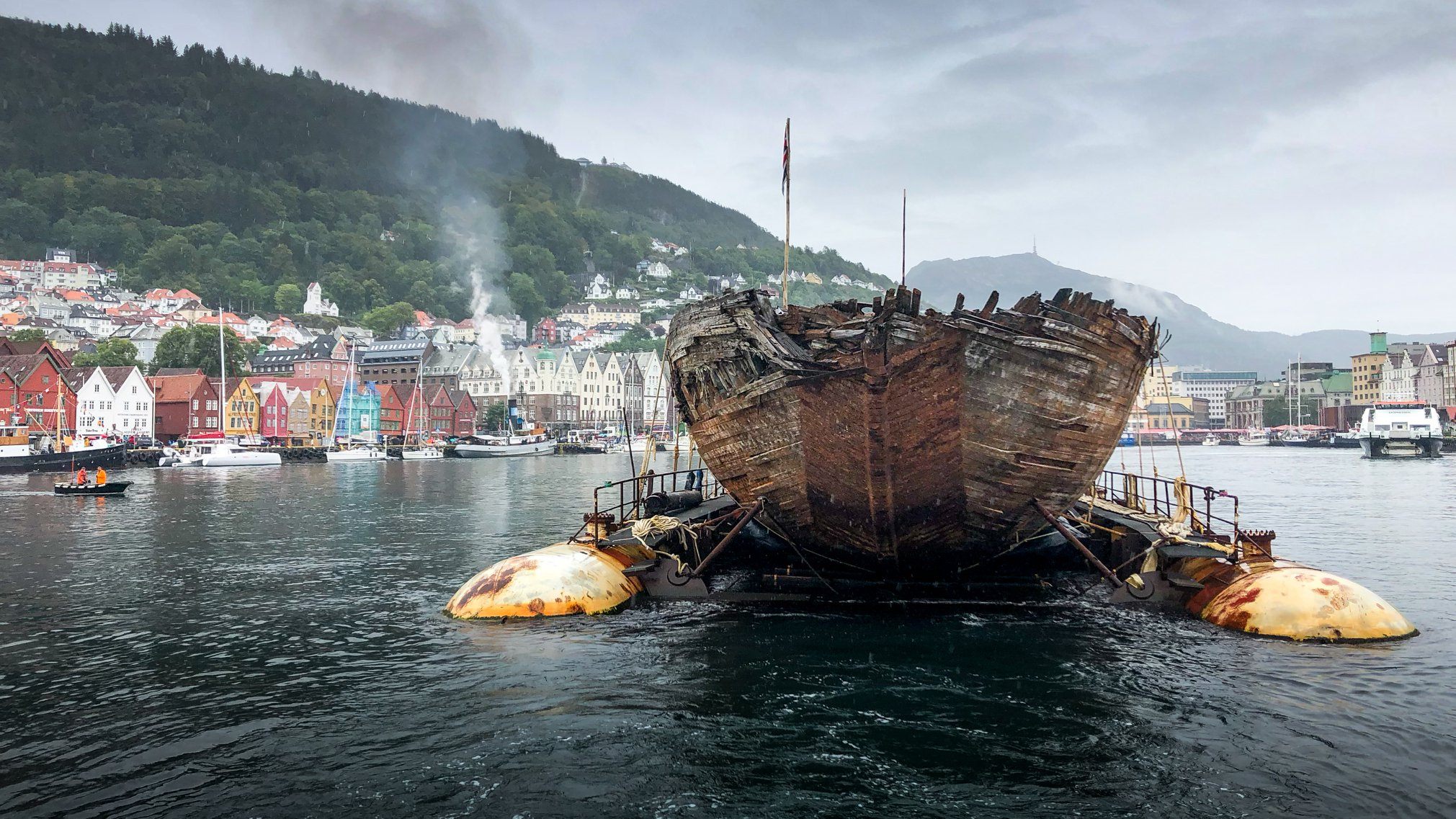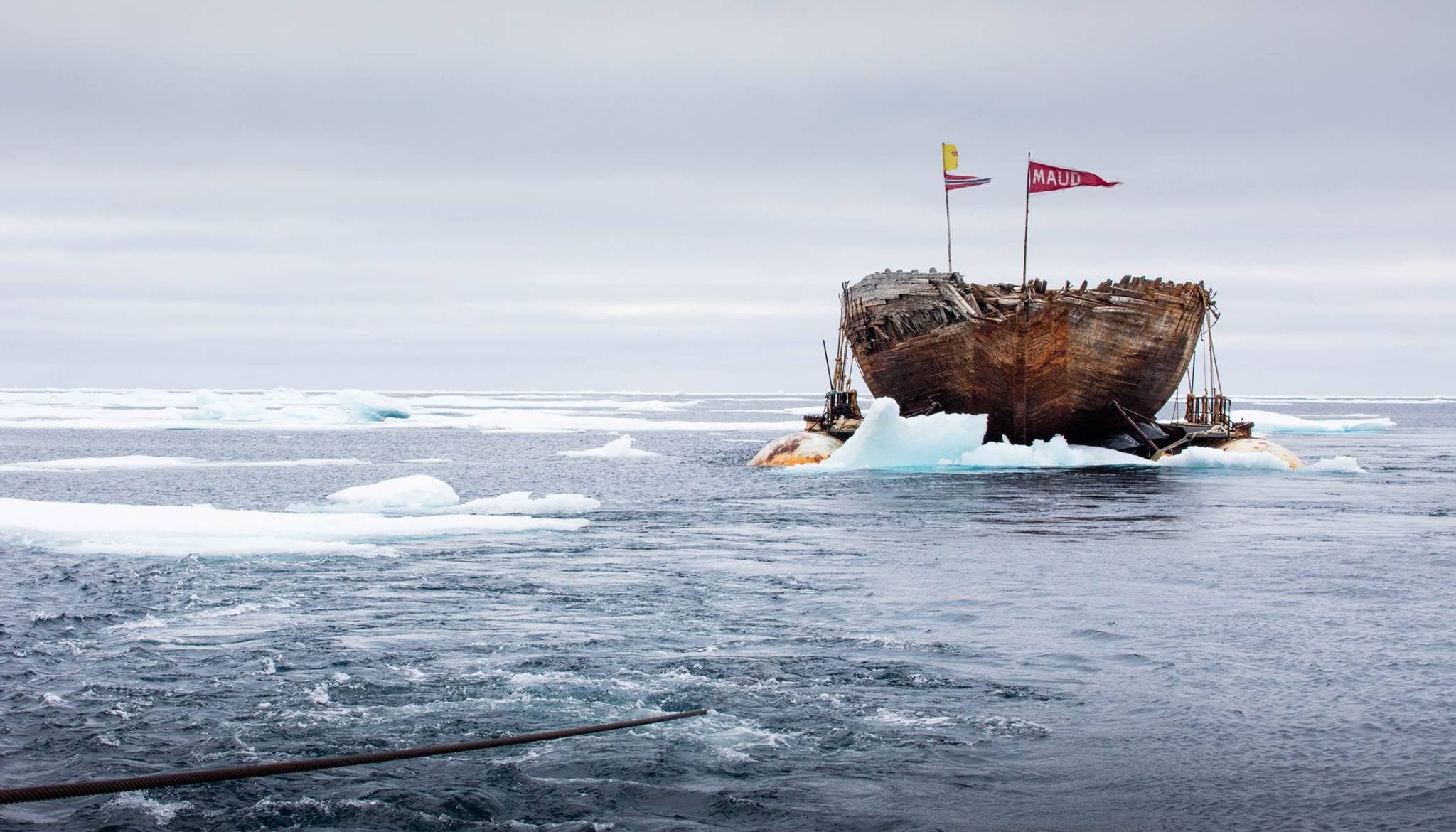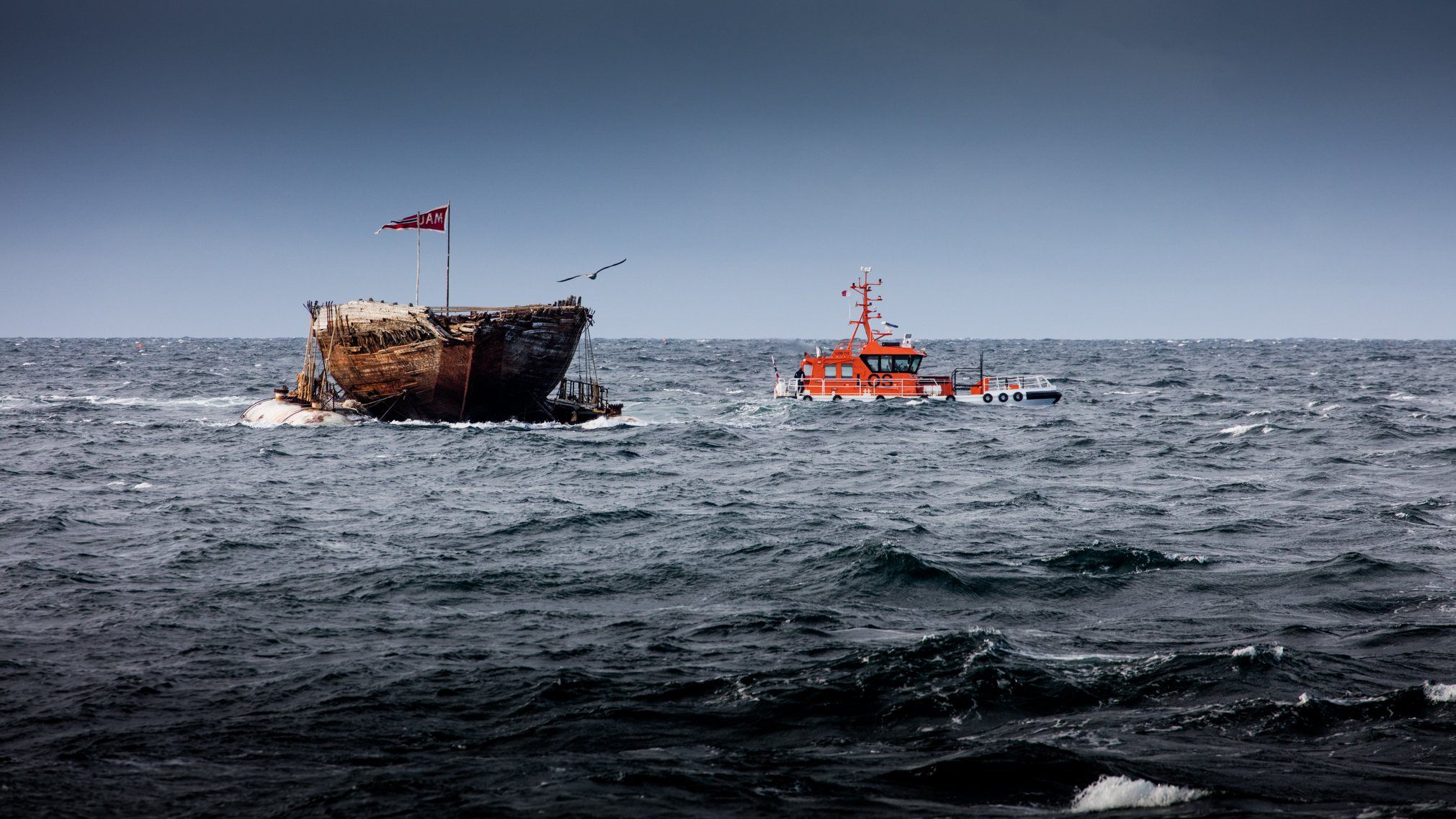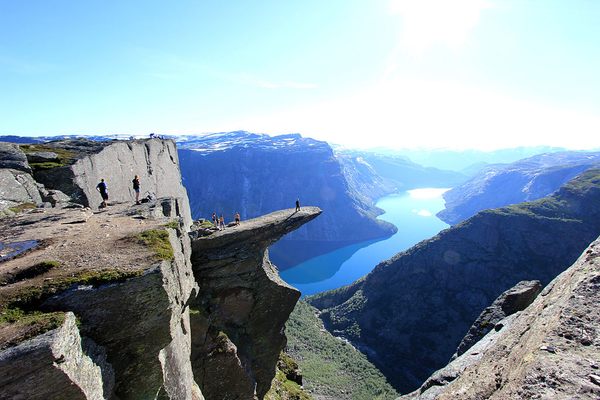After a Century in the Ice, Maud Has Returned Home to Norway
The polar exploration ship survived freezing, sinking, and seizure by creditors.

On June 7, 1916, the polar explorer Roald Amundsen took a moment to christen his new ship. As in many places, sailors around Vollen, Norway generally did this by smashing a bottle of champagne over the bow. But Amundsen, who intended to take the ship to the North Pole, changed this tradition a bit.
“It is not my intention to dishonor the glorious grape,” he reportedly said, “but already now you shall get the taste of your real environment. For the ice you have been built, and in the ice you shall stay most of your life, and in the ice you shall solve your tasks.” He then crushed a block of the stuff against the front of the ship, and named it Maud, after the Queen of Norway.

Amundsen was a little too correct. Although Maud never made it to the North Pole, it did spend most of its life in the ice, either stuck, sunk, or conscripted into labor. This Saturday—August 18, 2018, over a century after it first set out—Maud will finally creak back into Vollen.
The ship’s life “represents a big, but quite unknown, part of polar history,” writes Jan Wanggaard in an email. Wanggaard is the leader of Maud Returns Home, a project dedicated to bringing the ship to Norway from Nunavut, Canada, where it foundered in the early 1930s. At press time, he is onboard Maud, which is being towed along the Norwegian coast, stopping at various ports along the way. “We have sailed since June, and it’s good to be back in Norway,” he writes.

Maud first left home in 1918, carrying Amundsen and three crew members northwards. The plan was to freeze the ship into the ice cap, where it would serve as a scientific research station and eventually drift all the way to the pole.
Amundsen’s most recent journey had been quite successful—in 1911, he led the first team to reach the South Pole—but this one was more difficult. Amundsen was attacked by a polar bear, and crew members got carbon monoxide poisoning from working in an unventilated observatory lit by a faulty kerosene lamp. The ship didn’t cooperate, either—as Wanggaard writes on the project website, “Maud spent several years in the Arctic ice without reaching the North Pole, and thus the expedition never got the deserved public attention.”

Amundsen tried again, hatching a plan that involved both airplanes and boats, but that failed, too. No attention means no money, and in 1925, Maud was seized by creditors. It was sold to the Hudson Bay Co., rechristened Baymaud, and put to work supplying company outposts in the Arctic.
The explorer did finally reach the North Pole, making it there by plane in 1926. But the loss of Maud to bankruptcy was “a big tragedy for him as a person,” Wanggaard writes. “He died a bitter and sad man,” disappearing in 1928 while trying to help rescue the crew of a downed airship.

Baymaud, née Maud, struggled, too. As its new owners soon learned, the ship wasn’t well-suited for transport work. In 1927, it was moored in Cambridge Bay, off the coast of Nunavut, and used as a warehouse and wireless station. In the winter of 1931, it sank. People salvaged material from it, and law enforcement eventually dynamited its stern, in order to remove the fuel tanks.
Even as the ship slowly rotted away, people remained fascinated by it. In 1990, the Norwegian municipality of Asker, where Vollen is located, bought Maud’s remains from the Hudson Bay Company for one dollar. Asker eventually gave the project over to a private company called Tandberg Eiendom.

In 2011, they brought Wanggaard on board, and over the past few years, he has jumped the various hurdles required to bring the ship back, from raising it off the seabed to negotiating with the residents of Cambridge Bay, some of whom wanted to keep it. (They ended up building a large stone cairn on the beach near the bay, to remember it by.)
Finally getting the ship back to Norway “feels pretty surreal,” writes Wanggaard. After they reach Vollen, they will turn Maud into a museum, similar to ones built for Amundsen’s other vessels, Gjøa and Fram.
“We have taken on one challenge after the other over the years,” Wanggaard writes. “I feel happy but also extremely tired these days.”



















Follow us on Twitter to get the latest on the world's hidden wonders.
Like us on Facebook to get the latest on the world's hidden wonders.
Follow us on Twitter Like us on Facebook